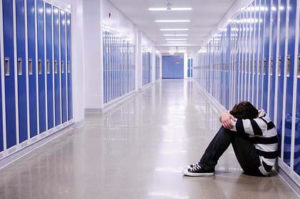Bullying can be a serious problem for any child, but for children with a medical challenge the risk is increased.
Knowing the facts about bullying is the first step toward preventing victimization of children and teens with medical conditions, and keeping them safe.
Aggressive behaviors
What exactly is bullying, and how does it affect the children involved? Bullying consists of aggressive behaviors that are repeated over time and involve an abuse of power by the perpetrator. It may take the form of verbal or physical abuse, or, especially for girls, cyberbullying occurs through social media.
The child who bullies learns how to use power and aggression to control and distress another, and the child who is victimized learns about losing power and becoming trapped in an abusive relationship. The lessons for both parties are clearly destructive.
Contrary to what some people may think, bullying is not a normal part of healthy adolescent development and the suffering it causes may start early and last a lifetime.
Negative consequences
As all too many parents know, the negative consequences of bullying and peer rejection may be quite serious.
Compared to their peers, bullied children more often avoid school, perform poorly in their academic work, abuse drugs or alcohol, and think about suicide.
In fact, teenage victims of bullying are five times more likely to be depressed, and far more likely to be suicidal than their non-bullied peers. Since suicide is the third leading cause of death among adolescents in the United States, this is indeed a very serious concern.
Why is the risk for bullying higher for children and teens with epilepsy and other medical conditions? Various factors may be involved, including depression, anxiety, challenges with impulse control or social isolation.
If the child is prone to having seizures at school, or has other physical or intellectual disabilities, then the risk for bullying may be even greater. Recognizing that bullying might be taking place and taking action immediately is critical to protecting a child’s basic human right to be respected and safe.
How to help your child
If you know a child or teen who is at risk for bullying, then perhaps you are wondering how you can help. The first step is communication.
Most experts in pediatric mental health encourage adults to open a conversation about bullying with the child as early as possible, and for children at risk, to bring it up even before it appears that anything has happened. They recommend asking children directly about bullying, mood and suicidal thoughts, to encourage open communication and foster trust.
Once the topic of bullying is out in the open, then the important adults in the child’s life may work together to resolve the problem. Direct conversation with the teacher or principal is an important step, so that the bullying at school can be stopped immediately.
And to keep the bullying at bay, some schools are employing innovative new tools such as StandUp, a three-session, online, computer-based bullying prevention program designed to help high school students develop skills for relating to others in healthy, non-violent ways.
School-based programs like StandUp teach teens to treat themselves and others with respect, avoid being a bully, get help if they are a victim of bullying and stand up to stop bullying when they see it occur. Initial research on such programs has shown significant improvement in students’ healthy relationship skills, resulting in a safer, more respectful environment.
Talk to your child’s doctor
It is also wise to broach the topic during routine visits to the child’s physician, so that he or she may suggest appropriate interventions at home and at school and help treat any coexisting depression, anxiety or post-traumatic stress disorder.
The doctor may recommend consultation with a psychologist or psychiatrist to speed recovery and to help the child develop the skills and understanding to move forward with confidence.
Reaching out to a child at risk for bullying may prevent untold emotional pain and suffering, and perhaps even save a life. The good news is that with open communication and modern bullying-prevention techniques, we can work together to protect our children and teens from victimization.
This post is based on one of a series of articles produced by U.S. News & World Report in association with the medical experts at Cleveland Clinic.
Source: The Cleveland Clinic


